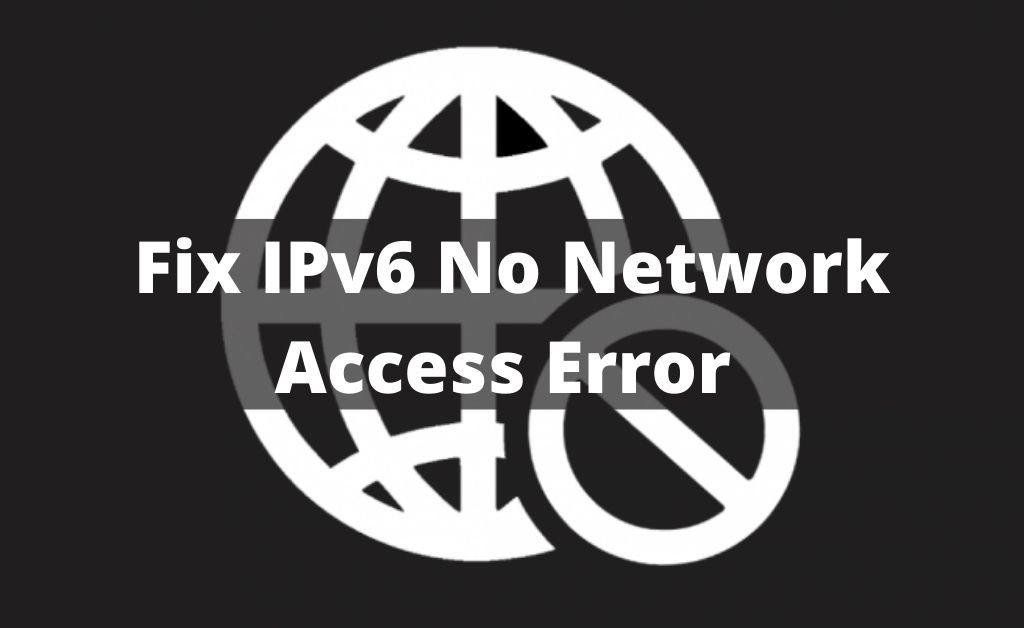
When you connect to the internet, the computer obtains more than one IP address. The unique identification separates every client computer, smartphone, tablet from the others. There are basically two types of IP addresses – IPv4 and IPv6. IPv6 is reserved for optical fibre connections. It seems that you use an optical fibre network but facing IPv6 no network access. Now, you have to understand some basic matters first. When your system receives an address, it is IPv4, not IPv6. This means that you are not only using IPv6 but there is also the support of IPv4. The internet access will show up next to the IPv6 connection. Of course, there are some major reasons behind the issue.
What are the Reasons behind the Issue?
Outdated network drivers, corrupted system OS, outdated router’s firmware, and many more. These can be the possible reasons regarding IPv6 no network access. So, it is obvious that you have to fix it as soon as possible to restore your network connection. Let’s get along with the solutions.
Best Possible Solutions to Fix IPv6 No Network Access
All these solutions will help you with the ongoing issue related to the IPv6 internet protocol. Before that, make sure your internet connection is active and stable. You can perform a check for ping loss with the help of the Command Prompt.
Solution 1: Reboot your Computer
Apart from IPv6 no network access, the reboot/restart of your device can resolve most problems. Hopefully, this will work. Close all the applications, click on the Windows logo and choose Restart. You can press the Ctrl+F4 key and select restart from the drop-down menu. When the boot and application time are over, connect through the IPv6 protocol. Hopefully, this process will help rejoin the wireless or wired network once again.
Solution 2: Restart the Available Network Devices
Previously, a home or office internet connection had a modem and a router. As the network technology advanced, the router could play the Omni-role network device. It is a router, modem, repeater as well as a switch. In case you have both modem and router, restart them both.
Solution 3: Get the Latest Version of System OS
The outdated system OS can be a probable cause for IPv6 no network access. So, first, you have to check the Task Bar for notifications. When an update is available, the OS will notify you. If there are no notifications, navigate to the Control Panel or Settings. Choose Update and Security. You will find the button “Check for updates”. Click on it as the system OS will connect to the master server to find any available updates.
Solution 4: Update the Network Drivers
The outdated network drivers can lead to IPv6 no network access. To set the IPv6 network connection to normal, you have to get the latest version of network drivers. Navigate to your computer’s Device Manager, and click on the Network Driver Adapter. The list of drivers is present – WAN, LAN, FTP, Bluetooth, and many more. Right-click to start the update. When done, restart your system to save changes.
Solution 5: Get the New and Updated Router’s Firmware
As you already know, network devices play the main role in connecting and accessing the network. If the router firmware is outdated, the IPv6 no network access occurs. Visit the router manufacturer website and download the latest firmware package file. Surely, it will be available in the zipped format. After the download is complete, you will find the file in the default Downloads folder. Unzip the file and open the Router Management page. Navigate to the Update and Security section and upload the file.
Solution 6: Resolve the Issue with Windows Troubleshooter
The built-in troubleshooter has the capability to resolve any issues within the system. When the IPv6 has no network access, it will not be an exception. As usual, navigate to the Settings and choose Update and Security. Select Internet Connections and click on Run the Troubleshooter. The process will take some time, wait until it’s done.
Is it Possible to Reset the IPv6 Settings?
Yes, of course. It is very much possible to reset the settings of IPv6 with the help of Command Prompt. Run the built-in app as an administrator. When the black screen appears, type “netsh winsock reset catalog”. After that, press Enter and type “netsh int ipv6 reset reset.log”. Press Enter once again, close Command Prompt and reboot your computer.
What about the VPNs and Proxys?
The use of VPNs and Proxies are obvious when you are conscious about your private network. When IPv6 has no network access, try disabling the active proxy or VPNs. Hopefully, the optical fibre protocol IPv6 will work without any interruptions.
